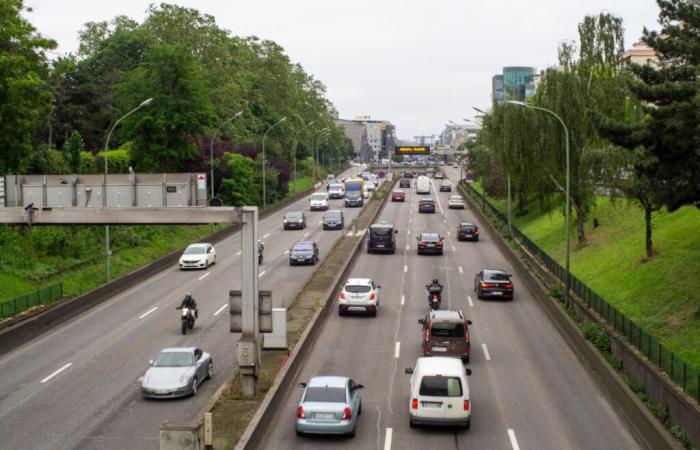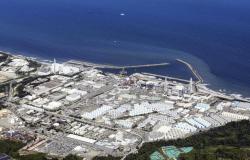A shock measure, but for what purpose? This Tuesday morning on RTL, the mayor of Paris Anne Hidalgo announced that from October 1st, the maximum authorized speed on the ring road surrounding the capital would be lowered to 50 km/h, compared to 70 km/h currently.
During her radio interview, Anne Hidalgo did not provide a justification for this change, simply recalling that the Parisian municipality “has been working on it since 2018, so it is not a new subject”. We can therefore wonder about the reasons that motivated the realization of this measure, which has been envisaged for a long time.
A “public health measure” according to Anne Hidalgo
A few days ago, the mayor of Paris argued in an interview with Ouest France that this is a “public health measure for the 500,000 people who live near the ring road”. This health issue is based on very concrete elements, relating to the atmospheric population.
According to the Atmo France organization (which brings together the various approved air quality monitoring associations), exposure to fine particles, largely generated by car traffic, is in fact responsible for around 40,000 deaths per year in France.
An environmental objective?
Directly linked to this health objective, another stated objective of the municipal team is to contribute to the reduction of greenhouse gas emissions. Adopted by the Paris Council in December 2023, the 2024-2030 Climate Plan proposes in particular ways to enable the capital to reduce “its carbon footprint by 80%”.
Among the key measures, it is recommended to “transform the ring road into an urban boulevard, with the speed reduced to 50 km/h”. “This will reduce air pollution, exposure to noise for residents living near the ring road, and make travel between Paris and neighboring municipalities more fluid”, the authors of the report then support.
A measure proposed in a 2019 report
On paper, lowering the speed limit to 50 km/h should therefore have three main virtuous effects: a reduction in air pollution (and therefore greenhouse gas emissions), a reduction in noise pollution and a smoother flow of traffic. However, this triple promise seems to contradict, in part, the work previously carried out on the subject.
In her interview with RTL, Anne Hidalgo specifies that the proposal to limit the speed to 50 km/h initially comes from a report on the future of the Paris ring road presented in 2019 by the centrist elected official Éric Azière, UDI municipal councilor of the 14th arrondissement. However, while this report does indeed recommend lowering the maximum speed on the ring road, it also expresses significant reservations about the potential ecological benefits of such a measure.
The move to 70 km/ha had “beneficial effects”…
The issue of air pollution is one of the first topics addressed by this 2019 report, which notes that the ring road is “alone responsible for one sixth of nitrogen dioxide pollution in Paris”. “We have a very serious problem linked to the ring road,” confirms Cécile Honoré, head of the Studies department at Airparif. “We have very high levels and very severe excesses.”
The report then states that the reduction in the maximum speed from 80 to 70 km/h, which came into force in 2014, has “produced beneficial effects” on air pollution, but adds that “it should not be considered, however, that a reduction in the maximum speed or average speed automatically reduces air pollution. Oddly enough, it can be quite the opposite. In fact, thermal engines each have their own efficiency range. Within this range they pollute little, below and beyond they pollute much more.”
…but lowering the speed further would “not bring any real gains”
“At 70 km/h, it’s great, that’s where we pollute the least,” illustrates Fouad Awada, general director of the Ile-de-France Institute for Urban Planning and Development (IAU-IDF), quoted in the report. “On the other hand, as soon as we go below 50 km/h, we start to pollute more and as soon as we go above 80 to 90 km/h, we also pollute. The more you reduce the speed below 50 km/h, the more it pollutes.”
“The 70 km/h speed limit on the ring road is close to the optimum for air pollutant emissions,” confirms Aurélie Solans, municipal councillor responsible for the environment, also cited in the 2019 report. “We would not obtain any real gains from lowering the speed limit in terms of air quality today.” Anne Hidalgo now presents it as a “public health measure”, but it therefore seems that lowering the speed limit to 50 km/h will have only a very limited impact on the environment.
A positive effect on noise pollution?
If the argument of reducing air pollution contradicts the conclusions of the 2019 report, what about the other two? In terms of noise pollution, Eric Azière notes that “the lowering of the maximum speed from 80 km/h to 70 km/h since 2014 has contributed to a reduction in noise levels, estimated by Bruitparif at a reduction of around 1.2 dB at night (-10%) and 0.5 dB (-5%) during the day.”
“The limited decrease is explained in particular by a maintenance of the average speed thanks to a better flow of traffic”, adds the author of the text. Is it possible to further reduce this noise pollution by making traffic flow even more smoothly? The text does not explicitly answer this question, but does consider the decongestion of the ring road as an objective to be achieved.
Traffic flow, the real objective of the measure
Thus, among the measures recommended for 2030 to “combat air and noise pollution and reduce exposure of local residents”, the report proposes to “lower the speed to 50 km/h in order to improve traffic flow”. This objective of improving traffic flow, which should in particular produce virtuous effects in terms of noise pollution, therefore seems to be the main reason justifying the decision announced this Monday morning by the Mayor of Paris.
In the longer term, the idea is also to continue to operate this transformation of the ring road into an “urban boulevard” mentioned in the Climate Plan of December 2023. According to the Caradisiac website, “the aim is to transform this ‘grey belt’ into a ‘green belt’, by reducing the traffic space to two lanes, three fewer than today. A third lane would be reserved for shared mobility and public transport, in line with what was put in place for the Olympic Games.”
Traces of this thinking could already be found in the 2019 report, where Jean-Louis Missika, former deputy mayor of Paris, responsible for urban planning, assured that “lowering the speed limit to 50 km/h would allow the installation of cycle paths and the diversification of modes of mobility” on the ring road, which could thus be opened to “bicycles, cargo bikes, electrically assisted bicycles, and even electric scooters”.






